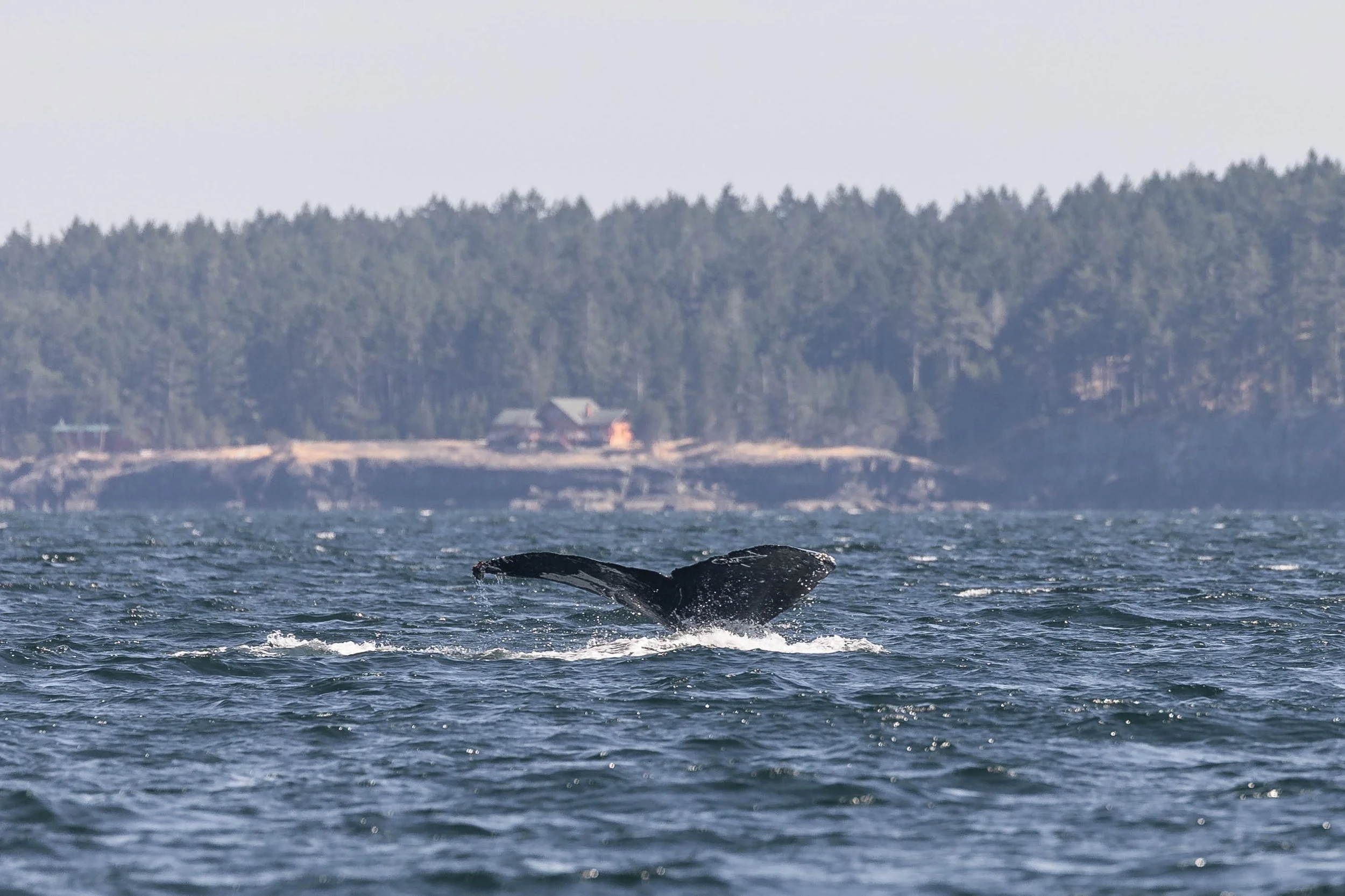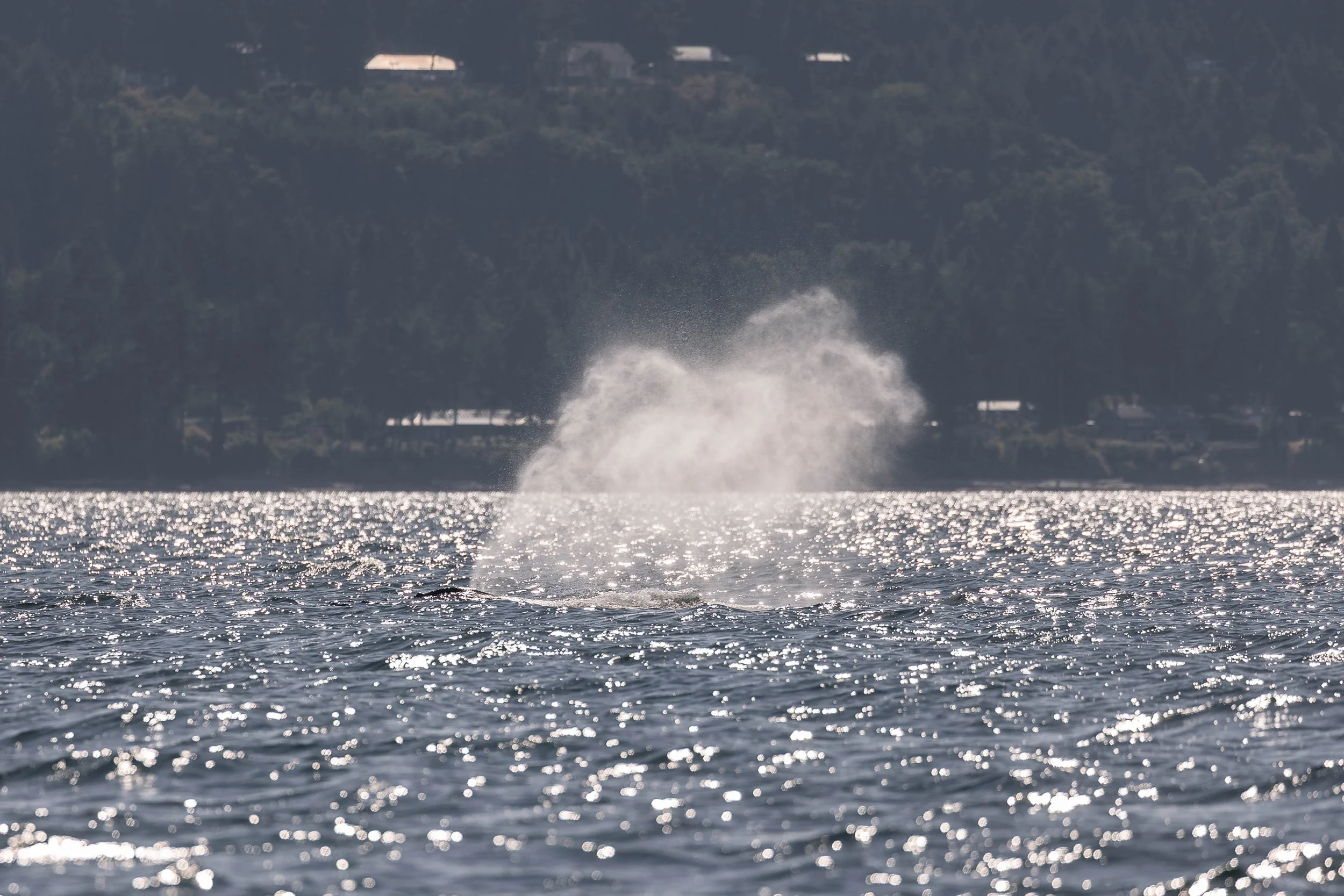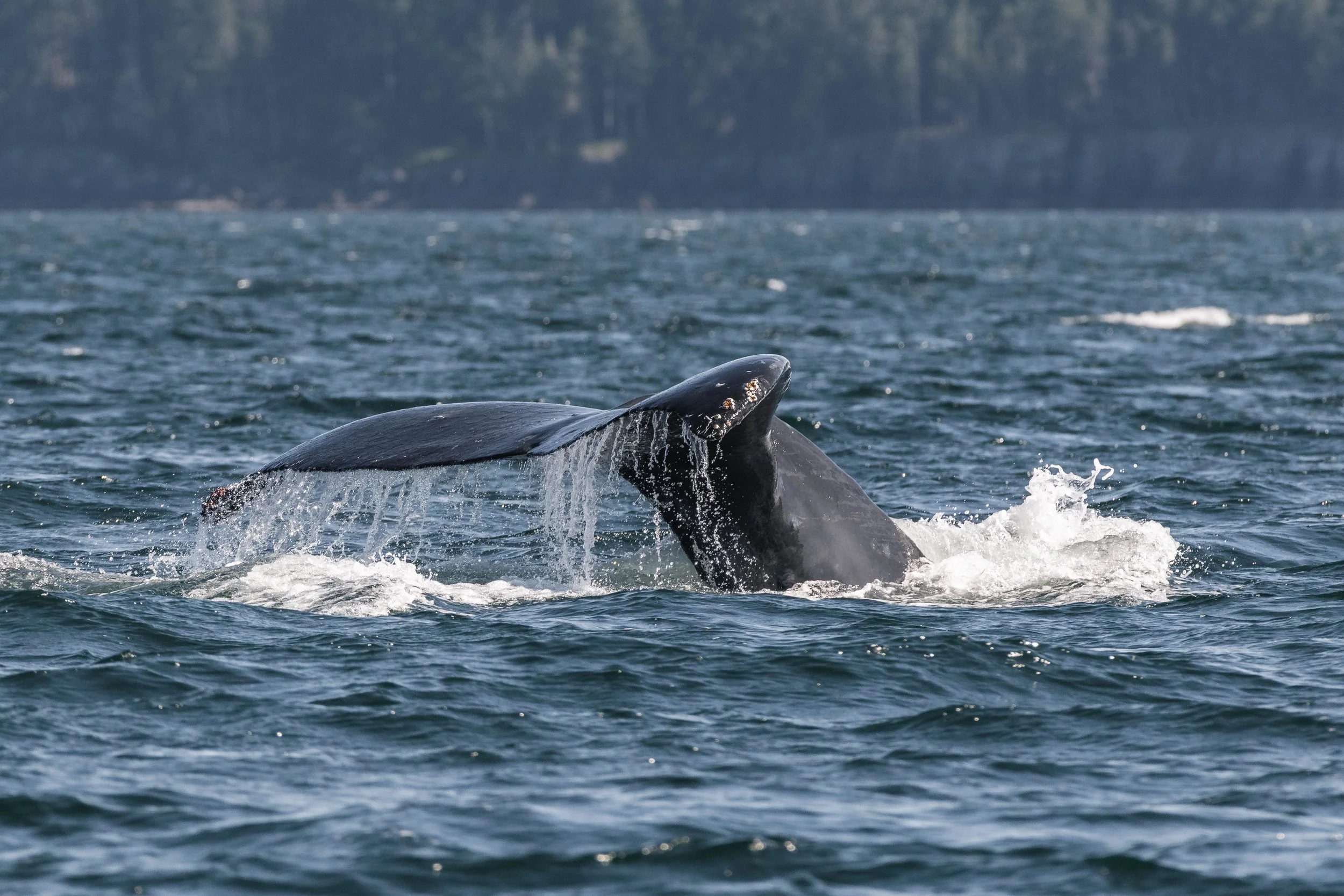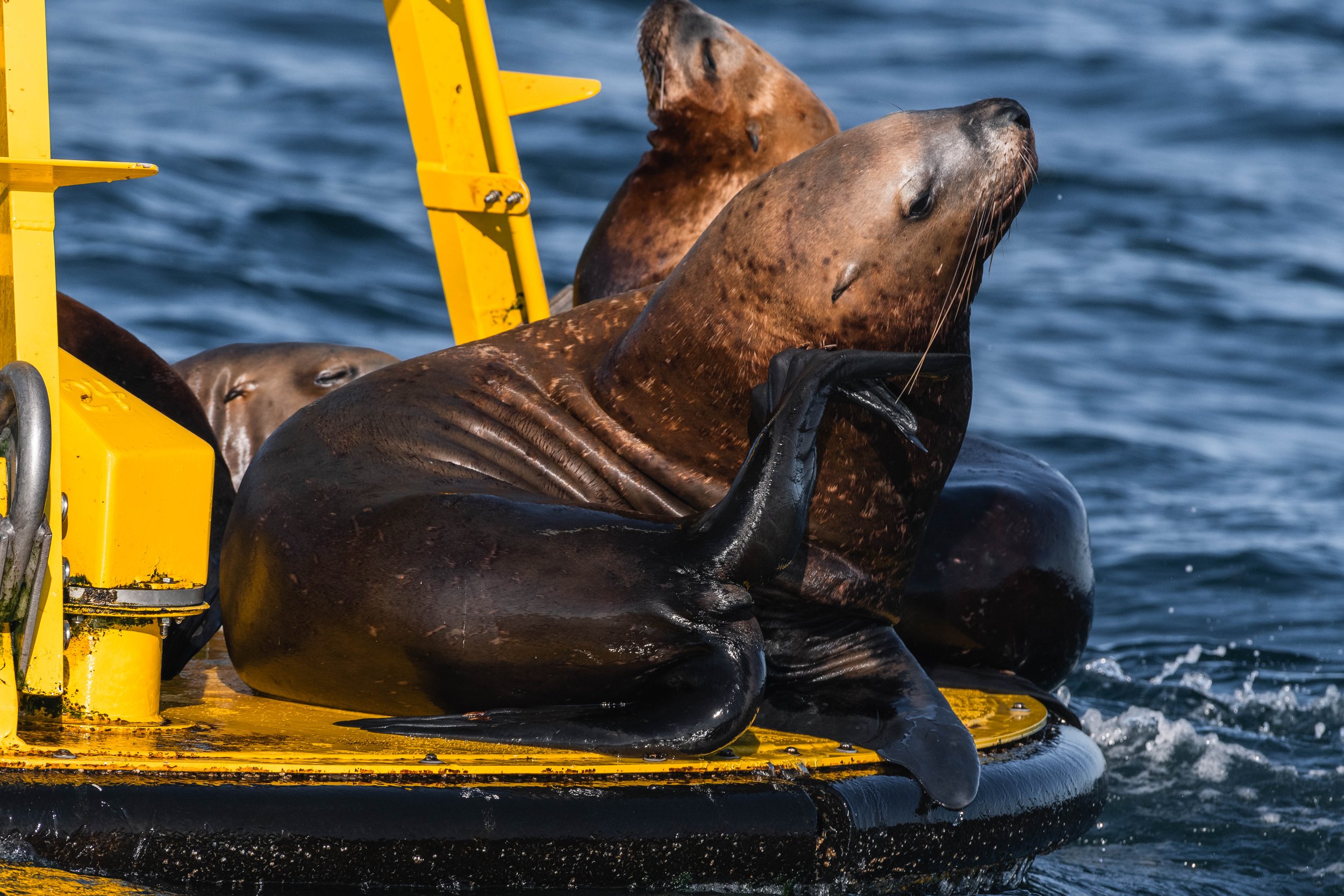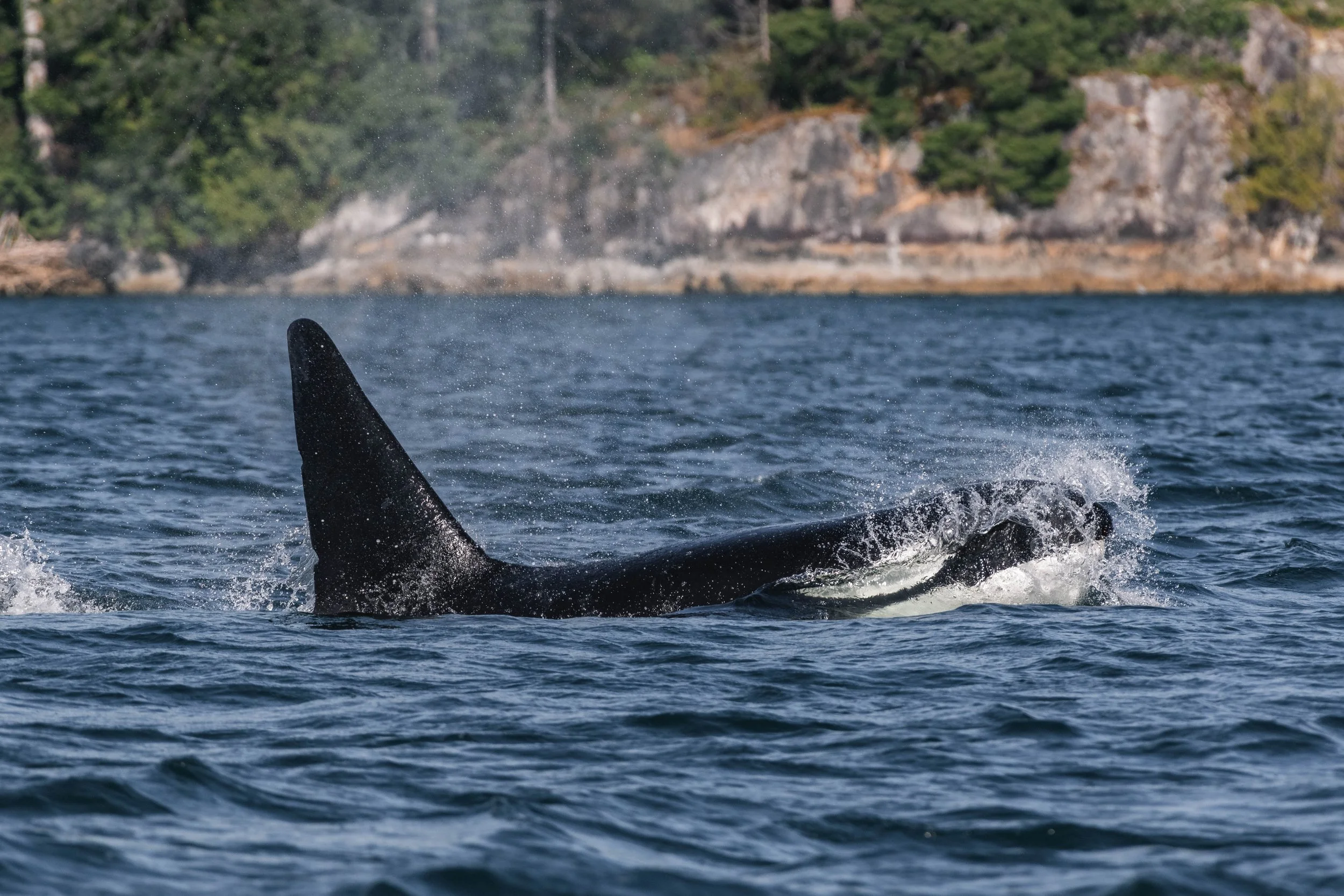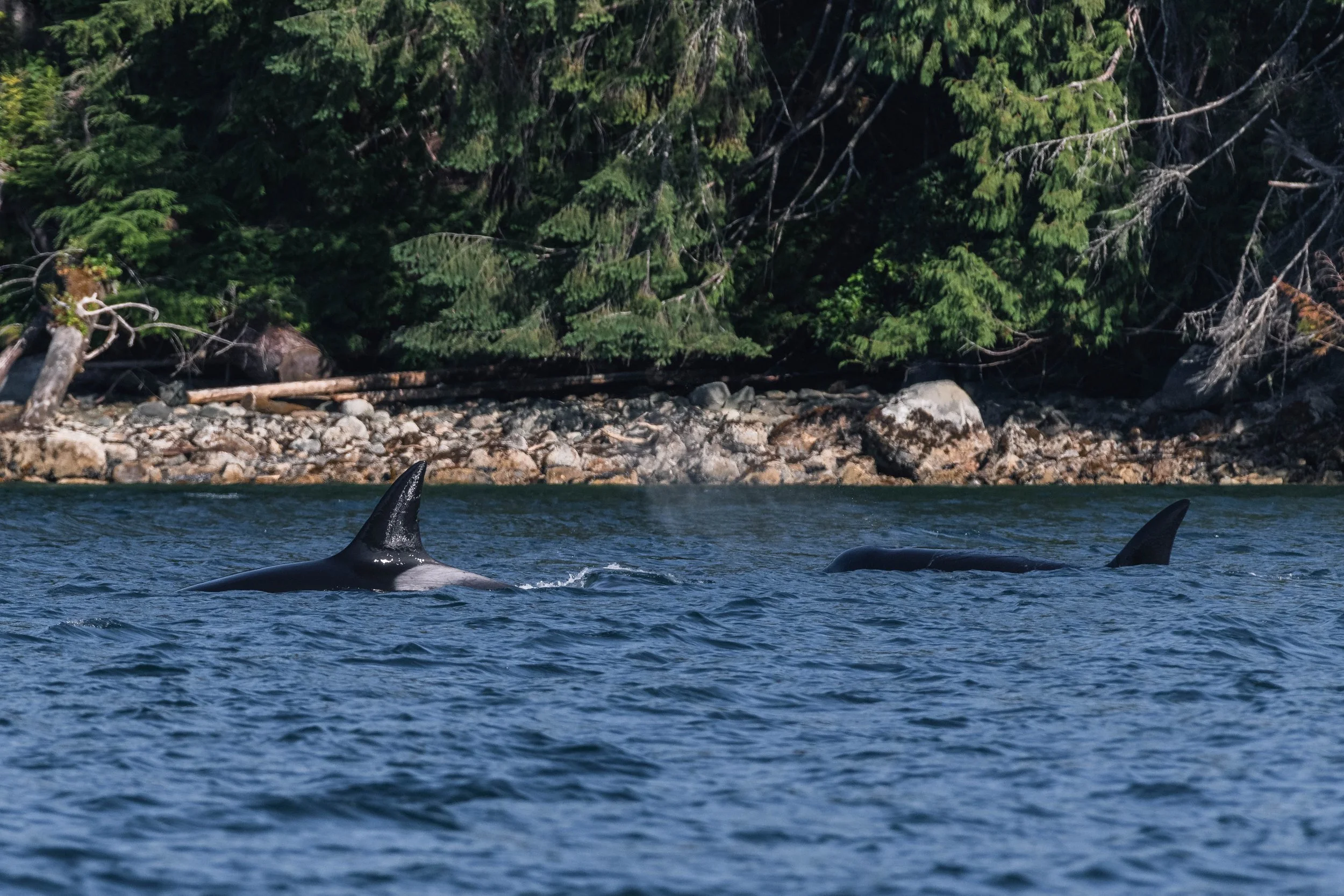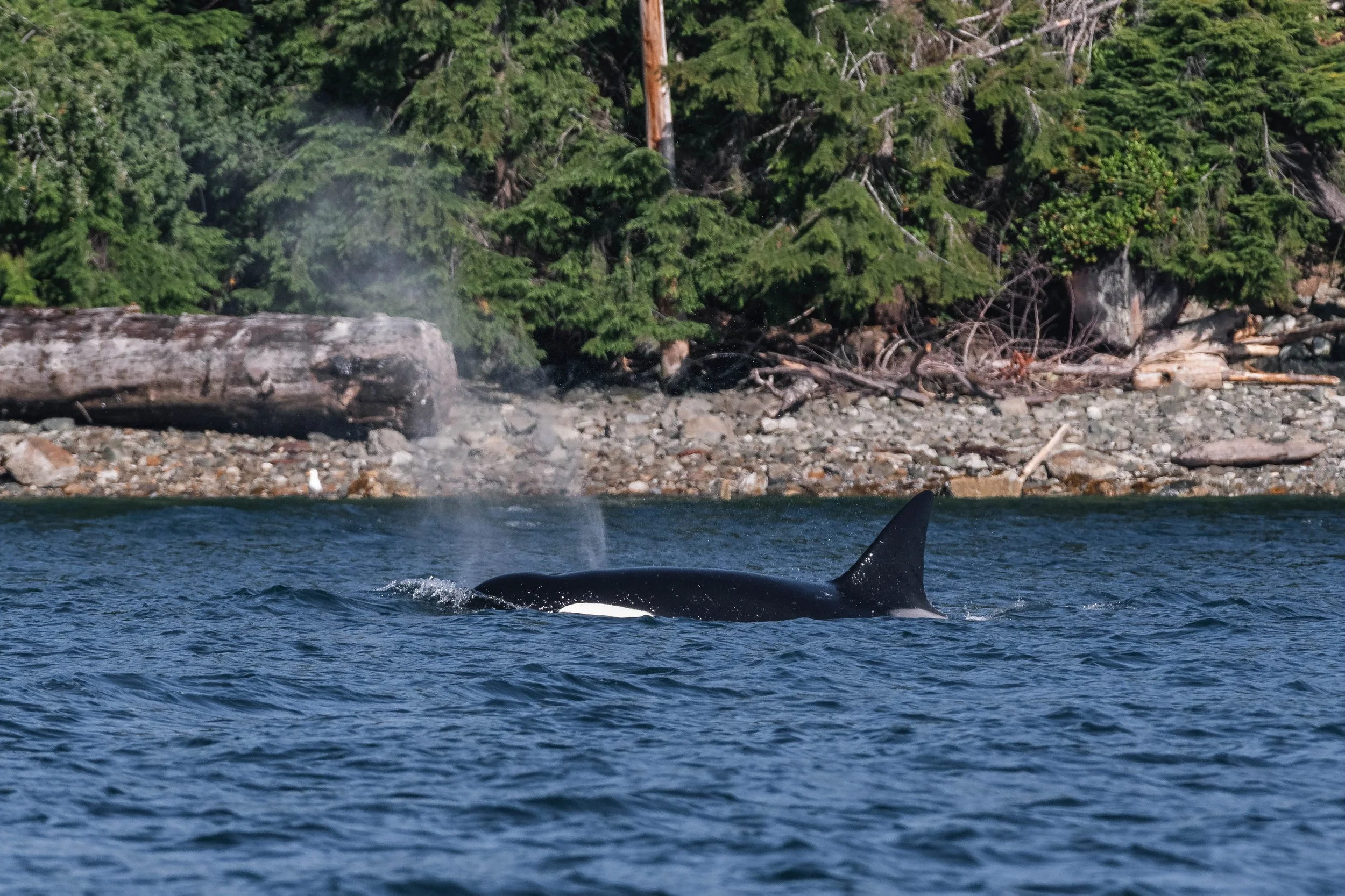July 18, 2025, 3:30 PM - Humpbacks near Gabriola, and the T137s in Howe Sound
We had some sun and some wind this afternoon with the full fleet off the dock and excited to get searching! The plan was to cross the Strait and see if we could reacquire the orca from this morning. We had a few distractions on our way across in the form of a humpback! We spotted Squirrel/Smoke (BCX2183) just north of Gabriola. We spent some time watching Squirrel travel and lift their big, beautiful tail repeatedly while diving. After meeting Squirrel in the Strait, we continued towards the Sunshine Coast with fingers crossed we’d find the orca.
We made one more quick stop on route to meet the largest sea lions in the world, our Stellers! These Steller Sea Lions are often hauled out on the buoy, warming up from foraging for a meal in the chilly depths. When you’re a heavyweight like these pinnipeds, you need to eat a lot! Females can weigh up to 800 pounds, and males can reach an astonishing 2800 pounds! After watching our Stellers nap in the sun, we were off, almost!
One of our open boats, Cascadia, had spotted another blow! This humpback was quickly identified as Anvil, a familiar fin in our waters. She was travelling and fluking as well! Cascadia left Anvil (BCZ0410) to her travels and continued on.
We made it across and spotted what we were hoping to find: the orca! It was the same pod from this morning, consisting of 4 whales:
T137 Loon ♀ (~1984)
T137A Jack ♂ (2002)
T137B Tempest ♀ (2006)
T137D Wright ♀ (2012)
We were in for a treat as these four had found themselves a meal, and the hunt was on. One of the most thrilling moments you can witness on the water is the unmistakable ripple of urgency among a group of transient orcas, also known as Bigg’s killer whales, as they go into hunting mode. These apex predators are constantly patrolling the coastline, always on the lookout for their next meal. On a recent tour, our guests got a front-row seat to this drama, watching a pod of orca coordinate a stealthy ambush on an unsuspecting harbour seal.
Unlike their fish-eating relatives, resident killer whales, transient orcas specialize in hunting marine mammals. Their diet includes everything from sea lions to porpoises, and yes, harbour seals. These orca must be opportunistic and efficient hunters. A single adult orca needs to consume around 300 pounds of food per day just to meet their energetic needs. That means regular and successful hunting is vital.
What’s especially impressive is that transient orca don’t hunt randomly. They’re strategic and methodical, often travelling quietly, surfacing without a splash, slipping beneath the waves in silence. When a seal is spotted resting on a rock or bobbing in the kelp, the pod positions itself for the hunt, using the environment to their advantage.
Transient orca pods are matrilineal, meaning they are led by a matriarch, typically the oldest and most experienced female in the group. And when it comes to the hunt, it’s usually the matriarch and the adult females who do the majority of the work. Their knowledge of coastline features, haul-outs, tide cycles, and prey behaviour is unmatched.
During this particular hunt, we watched as the matriarch initiated the approach, followed closely by her daughters. The adult male stayed back, watching. The female orca worked in seamless coordination, corralling the seal and cutting off its escape routes. It was a powerful display of both intelligence and teamwork.
Once the seal was successfully captured, another fascinating behaviour unfolded: prey sharing. In transient orca culture, food is often shared among pod members. The adult females ensured the calves received their portion, helping them learn not just the mechanics of hunting but the social responsibilities that go along with it. Even mature males, who rarely participate in the hunt, benefit from these social meals, a testament to the tight-knit bonds within these families.
We often say that watching transient orca is like seeing nature’s most efficient predator in action. But it’s also a lesson in cooperation, matriarchal leadership, and ecological balance. Orcas play a critical role in maintaining healthy marine mammal populations, and seeing that balance in motion is both humbling and exhilarating.
Encounters like this are a powerful reminder that the waters around Vancouver Island are teeming with life, stories, and survival. Every day on the water is different, and each hunt tells a story that goes far beyond predator and prey, it’s a glimpse into the rich, intelligent world of the transiant orca.
If you’re lucky enough to join us when the hunt is on, you won’t just see a whale, you’ll witness one of the most remarkable natural spectacles on Earth. After an exhilarating hunt, we decided to get going back across the Strait towards Nanaimo with the soft light of the sun setting behind us.
Enjoy the photos below by Aly Kohlman, Hayleigh Hilbert and Jordan Robinson.
Squirrel fluking. Photo by Hayleigh Hilbert.
Can you spot Squirrel right under their blow? Photo by Hayleigh Hilbert.
Fluke waterfall. Photo by Hayleigh Hilbert.
Squirrel’s dorsal fin. Photo by Hayleigh Hilbert.
Squirrel going down. Photo by Aly Kohlman.
Anvil fluking. Photo by Jordan Robinson.
Steller Sea Lions fighting over the best spot! Photo by Hayleigh Hilbert.
An itchy Steller. Photo by Aly Kohlman.
Giving us the eye. Photo by Aly Kohlman.
Guests on Cascadia watching the whales. Photo by Jordan Robinson.
Guests on Kula and Keta watching the whales. Photo by Jordan Robinson.
T137 Loon followed by T137D Wright. Photo by Aly Kohlman.
T137 Loon followed by T137B Tempest. Photo by Aly Kohlman.
T137A Jack bursting through the waves. Photo by Aly Kohlman.
A good look at Jack’s eye patch. Photo by Aly Kohlman.
T137A Jack’s tail. Photo by Aly Kohlman.
T137B Tempest swimming towards the camera. Photo by Aly Kohlman.
T137A Jack with a backdive! Photo by Aly Kohlman.
Pecs up! Jack’s pecs are around 6 feet long and 4 feet wide! Photo by Aly Kohlman.
A gull moves in to check for an easy meal. Photo by Aly Kohlman.
T137 Loon with T137B Tempest in tow. Photo by Aly Kohlman.
T137B Tempest. Photo by Aly Kohlman.
T137 Loon. Photo by Aly Kohlman.
A good look at T137 Loon’s saddle patch. Photo by Aly Kohlman.
T137A Jack charging ahead. Photo by Hayleigh Hilbert.
Tails up! Photo by Hayleigh Hilbert.
T137A Jack! Photo by Hayleigh Hilbert.
T137B Tempest making waves. Photo by Hayleigh Hilbert.
A good look at the scars on T137A Jack’s dorsal fin. Photo by Hayleigh Hilbert.
T137D Wright surfacing. Photo by Hayleigh Hilbert.
A peek from T137B Tempest. Photo by Jordan Robinson.
A rainblow! Photo by Jordan Robinson.
Breach! Photo by Jordan Robinson.
The Queen of Surrey crusing past. Photo by Jordan Robinson.
Take off! Photo by Jordan Robinson.

